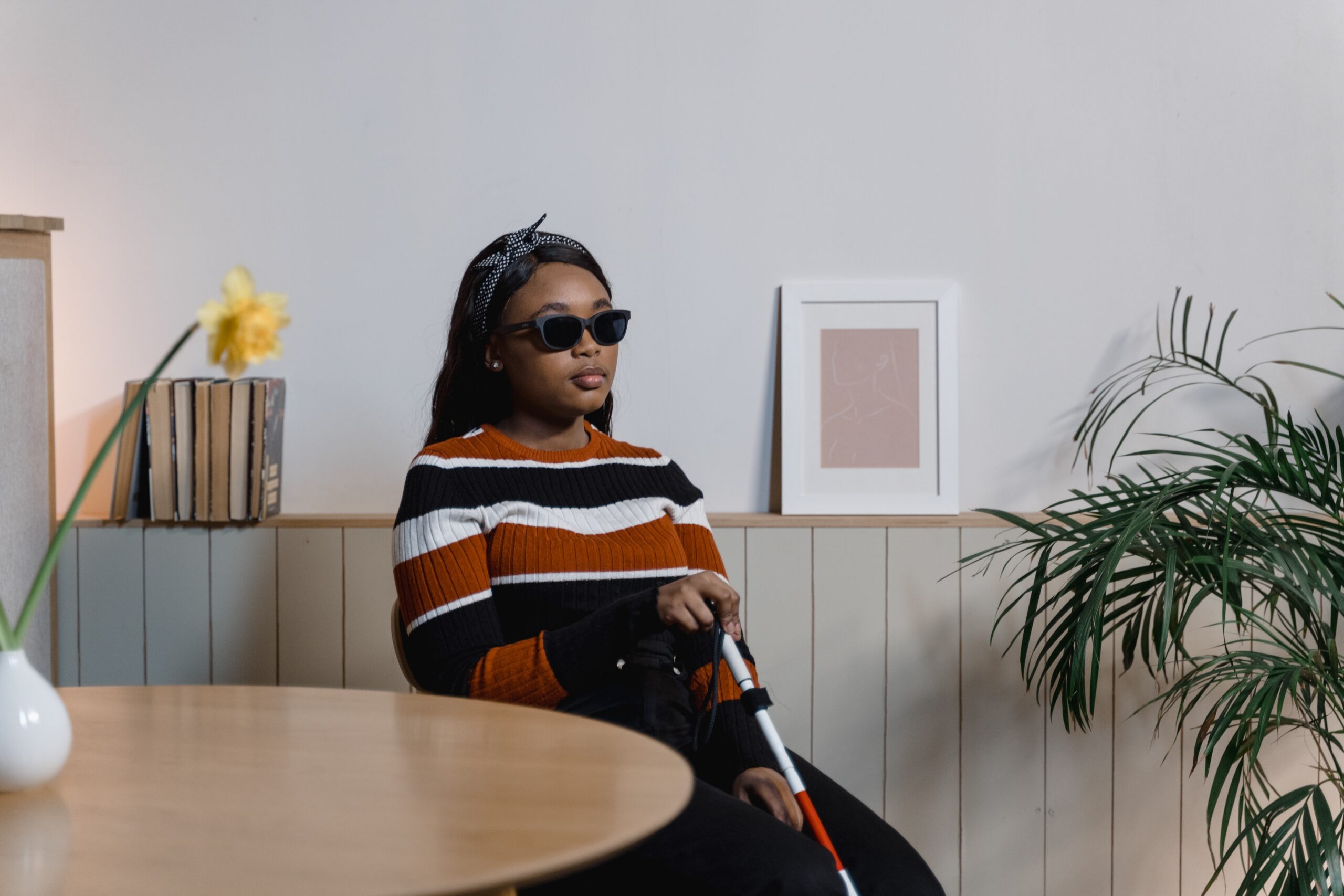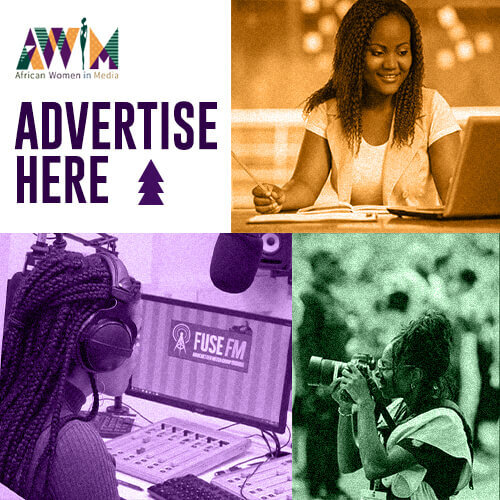Groundbreaking Workshop on AI and Technology-Facilitated Gender-Based Violence at AWiM24
Trending
Sunday June 1, 2025
Trending

Disability inclusion expert and media trainer Dr Tsitsi Chataika is a seasoned academic who has produced numerous research journals and books highlighting the need for equal opportunities for disabled individuals. Providing a media perspective, she shares with AWiM the key principles to being both gender-sensitive and disability-sensitive reporters.
—
Labels can often be constrictive, but often, it is not the label that isolates the concept, but rather the mind.
A bottle of water can be labelled as, ‘Still Water’ while the contents within the bottle, which is water, is a known essential body fluid in all living organisms crucial to life and good health.
Outside of the body water serves numerous functions that, in the end, it exists outside of its original label. It is not limited to being one thing.
Dr Tsitsi Chataika believes in a similar way, marginalised groups have the human right to be seen and understood as humans with different facets and capabilities outside of the labels they are given.
“Although we are starting to see mindsets shift in the African context when it comes to disability, society commonly fails to understand that a person with a disability is still able to contribute to social, community and economic development.”
While, the Oxford Dictionary defines ‘Disability’ as: ‘A physical or mental condition that limits a person’s movements, senses, or activities,’ it does not describe individuals with disabilities as being completely hindered in their ability to contribute to society as its members.
Their human rights remain.
Before Dr Chataika took up her current position as a Senior Lecturer at the University of Zimbabwe, working in the field of disability and inclusive education, she was a primary school teacher.
“In the early years of my career, I used to be a teacher for children with disabilities and that is really when my interest in inclusive education and disability rights first began,” the Zimbabwean tells us.
Working in that environment allowed her eyes to see the gaps in the educational system where marginalised children in the country were being left out.
In 2019 the Annual Education Statistics Report highlighted how there were nearly 86,000 children at primary and secondary school level in Zimbabwe with impairments.
To add to this the following year when the events of Covid-19 took place and shut schools temporarily, 40 per cent of low and lower-middle-income countries left disadvantaged learners unsupported according to UNESCO.
“When there are two children and there are resources to support one child and not the other,” Dr Chataika explains, “the chances are that the other child will no longer go to school or proceed to university which opens up room for a cycle of poverty to begin, where that child is more vulnerable to abuse, child marriage and pregnancies.”
When that child is a disabled girl child, the lecturer explains the circumstances become much worse: “Disability is a cross-cutting issue which cuts across all disciplines,” she states, “it intersects with gender amongst other social categories and so when a woman is disabled, she is double marginalised as she faces inequalities at more than one level.”
The inequalities women face have been longstanding issues that are evident in all sectors of work, education, home and social life. For a woman with a disability, she will face all of these whilst also navigating the challenges of being disabled in a society that does not always understand her.
Shifting mindsets
In 2019, Dr Chataika published her book The Routledge Handbook of Disability in Southern Africa featuring contributions from other scholars specialising in disability inclusion.
One of the chapters of the book highlighted how cultural and religious views combined with gender norms impact persons with disabilities.
“here are certain cultural practices and myths that have created barriers to the socio-economic participation women with disabilities have,” the PhD graduate states.
Examples of prejudices against people who are born with a physical impairment can often include beliefs such as family curses, and offences to religious authorities like sin where members of the community can accuse the mother of the child of adultery.
Such wrongful beliefs are inaccurate and harmful Dr Chataika explains: “Although, these beliefs are not as common as they used to be particularly in the urban areas of Zimbabwe due to more activism around disability education taking place,” she adds, “they are still there in some rural regions where disabled individuals feel isolated and disempowered in their communities.
Disability stigma and discrimination also affect parents with disabled children as a study in Zambia, Cameroon, Ethiopia, Senegal and Uganda identified that 38 per cent of caregivers hid their child away or forbid them from taking part in social activities due to the stigma they faced and for some, as a form of protection.
It is for this reason that Dr Chataika believes strongly in the need for better public education and dissemination of information about different types of impairments.
Reporting on Disability Best Practice
“The media has an opportunity to act as a tool for dismantling these myths, and negative mindsets on disability,” she expresses, “through accurate reporting, political correctness and sensitivity, journalists can help end the spread of harmful information.”
To do so media training on reporting topics with disability accurately, are a necessity.
“I have read articles featuring a disabled person where the focus of the article discredits the achievements and contributions that person has made in their community or country,” the Zimbabwean shares, “This is an issue because it adds to perpetuate the same myths and excluding remarks as before.”
When Dr Chataika is not studying, travelling or teaching university students, she is on the ground working with local charity organisations such as CAMFED and CBM which help to support the development of vulnerable young girls and women.
Through her role as Chairperson for the Zimbabwean board at CAMFED, she has seen first-hand how empowering persons with disabilities with skills like entrepreneurship is the key to shifting all mindsets.
“When I visited an occupational college in Bulawayo, there was a deaf woman who was learning fashion and design,” Dr Chataika recalls, “the inclusive disability project we were running there provided her with training, a sewing machine and materials she could use to start up her own project.”
When the advocacy worker returned to visit the enterprising woman, she told her she was now supplying school uniforms to 500 schools in Zimbabwe.
“These are the stories journalists need to start telling,” Dr Chataika adds.
As part of her advocacy work in disability, the Zimbabwean has also trained journalists on the best practices for reporting topics on disability.
One of the key principles the media trainer points out is having sensitivity when it comes to interviewing a person with impairments: “Reporters need to understand they can speak to that person about topics outside of disability such as politics, climate change, art and entrepreneurship,”
The media cannot make assumptions as those do in cultural settings.
A person’s disability is only one part of their life. In storytelling, their interests, activities and roles can hold importance in representing who they are as people.
“It is also crucial to mention that there is an assumption that a person of disability is an activist in that area or wants to talk about disability always,” she expresses, “This is not always the case, in the same way, you may find that not every woman is a feminist.”
It is pivotal that reporters understand who they are speaking with and the appropriate questions to ask and reference.
Providing new narratives such as the progress that is being made in disability inclusion in Zimbabwe is also a way news reporting can be impactful: “Since 2018, we are seeing more representation of disabled persons working in cabinet or as officers and directors in high-ranking roles which have never happened before,” Dr Chataika tells AWiM.
Progress is not only being made in the Zimbabwean job sector but also in policymaking.
“I am actually the team leader for the Inclusive Education Bill and so far, we have a draft that we are waiting to send to the cabinet for approval.”
With new bills being proposed and educational wavelengths being made in the country as inclusion teacher trainers are also being introduced to educate different schools on disability, the Zimbabwean academic is happy and optimistic to see continual shifts in all sectors.
Through disability-sensitive and trained journalists, the media can be the next industry to join in disability inclusion efforts
As a society let’s not limit each other but see the crucial role we can all play in equal development.
This article is part of the African Women in Media (AWIM) Graduate Trainee Programme in collaboration with Fojo Media Institute
We’re not gonna spam. We’ll try at least.

Copyright 2020. African Women In Media
Copyright 2020. African Women In Media
Recent Comments